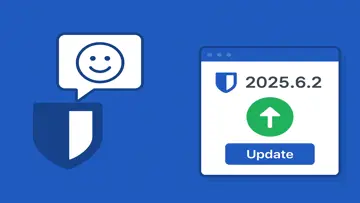Overview of Hardware Locality by Jeff Squyres
Hardware Locality, often referred to simply as hwloc, is an open-source software project designed to provide seamless access to the hardware topology of computing systems. Developed by Jeff Squyres, a known figure in the high-performance computing (HPC) community, hwloc allows users to discover and manipulate the various components of their computing environment efficiently. This includes CPUs, memory, caches, and various hardware accelerators. With an increasing reliance on hardware diversity in modern computing systems, this tool aims to facilitate better resource management and performance optimization.
Key Features
- Hardware Topology Discovery: hwloc can automatically identify and visualize the underlying hardware architecture of a single node or cluster. This includes hierarchical relationships amongst CPUs, memory, and I/O devices.
- Cross-Platform Compatibility: It is designed to work across various platforms such as Linux, Windows, and macOS. This wide range ensures that users can rely on hwloc regardless of their operating system.
- User-Friendly Visualization: The package includes utilities that create graphical representations of the system’s hardware layout. Users can quickly assess how different components are organized, facilitating better decision-making.
- Support for Multiple Architectures: hwloc offers the ability to work with diverse hardware setups, accommodating different architectures including x86, ARM, and more specialized processors.
- Integration with Other Libraries: The software is designed to be easily integrated with other libraries such as Open MPI and OpenMP. This interoperability makes it highly valuable in distributed computing environments.
Installation and Setup
The installation process for Hardware Locality is straightforward. Users can either build it from source or install it via package managers depending on their operating system. For example, on a Debian-based system, hwloc can be installed using the following command:
sudo apt-get install hwloc
After installation, users can begin utilizing the command-line tools and libraries included in the package immediately.
User Interface and Usability
Hwloc provides both command-line utilities and APIs for various programming languages such as C and C++. The simple command-line interface allows users to run commands like lstopo to generate visual representations of the hardware topology. Below are some common commands:
hwloc-ls: List the hardware topology in a tree format.lstopo: Generate a graphic representation of the topology.hwloc-info: Obtain detailed information about specific components.
The API facilitates deeper integration into applications where fine control over hardware resources is essential. This combines low-level access with high-level usability.
Performance and Benchmarking
The performance impact of utilizing hwloc is minimal; however, understanding the underlying hardware layout can significantly enhance application performance, especially in an HPC context. Users have reported improved application efficiency when leveraging hwloc's APIs for tasks such as resource allocation and data locality optimizations.
Use Cases
The primary audience for Hardware Locality includes developers working within HPC environments, academic researchers performing computational tasks, and system administrators managing large clusters. Some specific use cases include:
- Optimizing MPI Applications: By knowing where processes are located within a multi-node architecture, developers can optimize communication patterns and reduce latency.
- Scheduling Tasks Based on Resource Availability: System administrators can make informed decisions on placement of jobs based on resource availability by inspecting the topology.
- Tuning Data Placement: In-memory data placement can be optimized based on local memory availability when running large data processing tasks.
Documentation and Community Support
The documentation for hwloc is thorough and well-structured, covering installation instructions, API references, user guides, and examples. It is available online and frequently updated to reflect new features or changes in functionality. Furthermore, there is an active community around the project where users can seek help or share insights via mailing lists or forums focused on HPC technologies.
The Hardware Locality tool created by Jeff Squyres serves as an essential resource for those involved in high-performance computing systems. Its ability to map out complex hardware layouts allows for better optimization strategies tailored for modern computational structures. As computing continues to evolve with diverse architectures emerging regularly, hwloc remains a relevant tool in ensuring efficient hardware utilization across all scales of computing resources.
개요
Hardware Locality 범주 개발 Jeff Squyres개발한에서 오픈 소스 소프트웨어입니다.
Hardware Locality의 최신 버전은 현재 알려진. 처음 2009-11-06에 데이터베이스에 추가 되었습니다.
다음 운영 체제에서 실행 되는 Hardware Locality: Windows.
Hardware Locality 하지 평가 하고있다 우리의 사용자가 아직.
최신 리뷰
|
|
Telegram Desktop
Telegram Desktop을 통한 안전한 메시징 및 파일 공유. |
|
|
Software Informer
Software Informer로 최신 정보 받기 |
|
|
Google Earth Pro
Google 어스 프로로 놀라운 디테일로 세상을 탐험하세요. |
|
|
KMPlayer
Windows 및 Mac을 위한 강력한 멀티미디어 플레이어 |
|
|
Windows PC Health Check
Windows PC 상태 검사로 PC를 원활하게 실행하십시오! |
|
|
SAMSUNG USB Driver for Mobile Phones
삼성 휴대폰을 위한 효율적인 연결 솔루션 |
|
|
UpdateStar Premium Edition
UpdateStar Premium Edition으로 소프트웨어를 최신 상태로 유지하는 것이 그 어느 때보다 쉬워졌습니다! |
|
|
Microsoft Edge
웹 브라우징의 새로운 표준 |
|
|
Google Chrome
빠르고 다재다능한 웹 브라우저 |
|
|
Microsoft Visual C++ 2015 Redistributable Package
Microsoft Visual C++ 2015 재배포 가능 패키지로 시스템 성능을 향상시키십시오! |
|
|
Microsoft Visual C++ 2010 Redistributable
Visual C++ 응용 프로그램 실행을 위한 필수 구성 요소 |
|
|
Microsoft OneDrive
Microsoft OneDrive로 파일 관리 간소화 |





